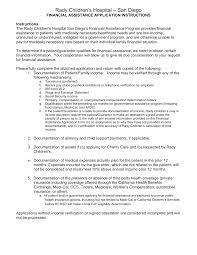
Complex demographics are common in nursing homes for the elderly, with half of them being 85 or older. Fewer than 1% of nursing home residents are under 65. Nursing home residents are predominantly women. Most of them are single and often don't have any family members. Some of these residents might have been widowed or divorcing, while others may not have ever married. These residents may have small families, which often have little or no control over their own lives.
Economic factors
There are many variables that affect the demand for nursing facilities, including Medicaid and economics. The National Long Term Care Survey is a nationally representative sample for elderly people with disabilities. It includes community-based older adults as much as those who live in institutions. Each sample member has been classified as Medicaid eligible or private-pay. For each category, the probability of placement at a nursing center is determined separately.

Qualifiers
There are many requirements regarding the care provided by nursing homes. These criteria are based on various factors, including physical, cognitive, and social needs. Some applicants for nursing homes may require assistance with various activities, including cooking, cleaning, and even using a telephone. Some homes may have specific requirements related to medical equipment, as well as assistance with toileting, eating, and continence.
Residents
Family members are often reluctant about leaving their loved ones in nursing homes. Only a small percentage of residents are left to their own devices. Family members can assist the elderly with daily activities, communication with staff, and reorient behavioral problems. Elderly residents may need reassurance from family members if they are experiencing major life changes. It can be difficult for a loved one to find the right nursing care home.
Family members have responsibilities
Responsibilities of family members in a nursing home for the elderly are a critical part of providing care for an older adult, but their roles are not always clear. This article examines issues related nursing homes' policies and attitudes regarding family involvement. We will be focusing on open communication as it can help to prevent miscommunications and foster quality care and a high level of quality life for residents.

Residents' behavior
These tips can help you to avoid residents who may be dangerous for your patients' care. First of all, avoid rushing and using quick movements when talking to residents. Do not use harsh or authoritative voices. This can cause confusion, and residents may feel defensive and vulnerable. The last thing you should do is avoid touching residents. Physical contact with residents can provoke violent behavior and escalate the situation. Instead, approach residents at the front and ask them questions. Then, respond with soothing facial expressions.
FAQ
What will happen if there is no Medicare?
The number of Americans without insurance will rise. Some employers will remove employees from their insurance plans. Many seniors will also have higher out-of pocket costs for prescription drugs or other medical services.
What are the services of health care?
Patients must know that they have easy access to quality healthcare. We can help you, whether you have an urgent need or a routine checkup.
We offer many types of appointments including walk-in surgery, same-day operation, emergency department visits, outpatient procedures and so on. We offer home care visits to those who live far from our clinic. We will ensure that you get prompt treatment at the nearest hospital if you aren't comfortable visiting our clinic.
Our team is made up of nurses, doctors and pharmacists as well dentists. We are committed to providing outstanding patient service. Our goal is to make your visit as comfortable and painless possible.
What are the different types of healthcare systems available?
Patients have limited control over the treatment they receive in this system. They visit hospital A if they are in need of an operation. But otherwise, it is best to not bother as there is little else.
The second is a fee for service system in which doctors make money according to how many tests, procedures, and drugs they do. If they aren't paid enough, they won’t do extra work for you, and you’ll pay twice as.
The third system pays doctors according to the amount they spend on care, not by how many procedures performed. This encourages doctors and patients to choose less costly treatment options such as talk therapies over surgery.
Who is responsible for the healthcare system?
It all depends how you view it. The government might own public hospitals. Private companies may run private hospitals. Or a combination of both.
What are the differences between different types of health insurance
There are three main types for health insurance:
-
Private insurance covers the majority of your medical costs. This type of insurance is often purchased directly from private companies, so you pay monthly premiums.
-
Although public health insurance covers the majority of the cost for medical care, there are some restrictions and limits. For example, public insurance will only cover routine visits to doctors, hospitals, labs, X-ray facilities, dental offices, prescription drugs, and certain preventive procedures.
-
The medical savings account (MSA) is used to help you save for future medical expenses. The funds are stored in a separate account. Most employers offer MSA program. These accounts are tax-free, and they accumulate interest at rates similar to bank savings accounts.
What are the main goals of a system for healthcare?
The three most important goals of a healthcare system should be to provide care for patients at an affordable cost, improve health outcomes, and reduce costs.
These goals have been incorporated into a framework known as Triple Aim. It's based on the Institute of Healthcare Improvement (IHI) research. IHI published this in 2008.
The idea behind this framework is that if we focus on all three goals together, we can improve each goal without compromising any other goal.
Because they don't compete with one another, this is why. They support each other.
In other words, people who have less access to healthcare are more likely to die as a result of being unable or unwilling to pay. This reduces the cost of care.
Improving the quality of care also helps us achieve the first aim - providing care for patients at an acceptable cost. It can also improve outcomes.
What is an infectious disease?
Infectious disease can be caused by germs (bacteria or viruses) Infectious diseases spread quickly through close contact. Examples include measles, mumps, pertussis (whooping cough), rubella (German measles), chickenpox, strep throat, tuberculosis, influenza, polio, hepatitis A and B, HIV/AIDS, herpes simplex virus, syphilis, gonorrhea, and chlamydia.
Statistics
- Healthcare Occupations PRINTER-FRIENDLY Employment in healthcare occupations is projected to grow 16 percent from 2020 to 2030, much faster than the average for all occupations, adding about 2.6 million new jobs. (bls.gov)
- Consuming over 10 percent of [3] (en.wikipedia.org)
- The healthcare sector is one of the largest and most complex in the U.S. economy, accounting for 18% of gross domestic product (GDP) in 2020.1 (investopedia.com)
- The health share of the Gross domestic product (GDP) is expected to continue its upward trend, reaching 19.9 percent of GDP by 2025. (en.wikipedia.org)
- For the most part, that's true—over 80 percent of patients are over the age of 65. (rasmussen.edu)
External Links
How To
What is the Healthcare Industry Value Chain (or Value Chain)?
All activities that are involved in providing healthcare services for patients make up the healthcare industry value chain. This includes the business processes within hospitals and clinics and the supply chains that connect them to other providers such as physicians, nurses, pharmacists, insurance companies, manufacturers, wholesalers, and distributors. The end result is a continuum, which begins with diagnosis and ends at discharge.
The value chain consists of four major components.
-
Business Processes: These are all the tasks performed by people throughout the entire delivery of healthcare. For example, a doctor may perform an exam and then prescribe medication. Each step must be done correctly and efficiently.
-
Supply Chains – All organizations that ensure the right supplies reach the correct people at the right times. A hospital might have several suppliers. These could include lab testing facilities, imaging centres, pharmacies, or even janitorial personnel.
-
Networked Organizations: To coordinate these entities, it is necessary to have some means of communication between them. Hospitals are often composed of many departments. Each department will have its own set office and telephone number. The central point will allow employees to get up-to-date information from any department.
-
Information Technology Systems (IT) - IT is essential in order for business processes to run smoothly. It is essential to ensure that business processes run smoothly. Without IT, everything would be a mess. IT is also a platform that allows for the integration of new technologies into the system. Doctors, for example, can connect to a secure internet connection to access electronic medical records.